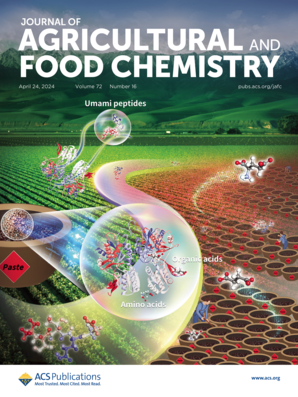Astaxanthin Prevents Glucocorticoid-Induced Femoral Head Osteonecrosis by Targeting Ferroptosis through the JAK2/STAT3 Signaling Pathway
IF 5.7
1区 农林科学
Q1 AGRICULTURE, MULTIDISCIPLINARY
引用次数: 0
Abstract
Glucocorticoid (GC) is extensively used in clinical practice, and the osteonecrosis of the femoral head caused by them is a common issue in orthopedic surgery, yet the underlying mechanisms remain unclear. Astaxanthin (AST), a potent natural antioxidant, has an unexplored impact on GC-induced osteonecrosis of the femoral head (GIONFH). This study explores the effects and mechanisms of AST in counteracting dexamethasone (Dex)-induced ferroptosis and GIONFH. We developed a rat model of GIONFH using intraperitoneal Dex injections and conducted in vitro analysis by culturing osteoblasts (OBs) with Dex treatment. We assessed the impact of AST on Dex-treated OBs using C11-BODIPY and FerroOrange staining, mitochondrial functionality tests, and protein expression analyses through Western blot and immunofluorescence. The influence of AST on bone microarchitecture of femoral head in rat was assessed using micro-CT, hematoxylin and eosin staining, immunofluorescence, and immunohistochemistry at imaging and histological levels. Our findings suggest that AST exerts an inhibitory effect on Dex-induced ferroptosis and GIONFH. In vitro, AST treatment increased glutathione and decreased malondialdehyde, lipid peroxidation, and mitochondrial-reactive oxygen species. Additionally, AST treatment also enhances the phosphorylation of STAT3, upregulates glutathione peroxidase 4 and osteogenic-related proteins, and stimulates bone formation. To delve deeper into the mechanism, the findings revealed that AST triggered activation of JAK2/STAT3 signaling. Moreover, the use of siRNA-STAT3 blocked the beneficial effect of AST in OBs cultivated with Dex. In brief, AST combats GIONFH by activating the JAK2/STAT3 pathway to inhibit ferroptosis.

求助全文
约1分钟内获得全文
求助全文
来源期刊
CiteScore
9.90
自引率
8.20%
发文量
1375
审稿时长
2.3 months
期刊介绍:
The Journal of Agricultural and Food Chemistry publishes high-quality, cutting edge original research representing complete studies and research advances dealing with the chemistry and biochemistry of agriculture and food. The Journal also encourages papers with chemistry and/or biochemistry as a major component combined with biological/sensory/nutritional/toxicological evaluation related to agriculture and/or food.

 求助内容:
求助内容: 应助结果提醒方式:
应助结果提醒方式:


